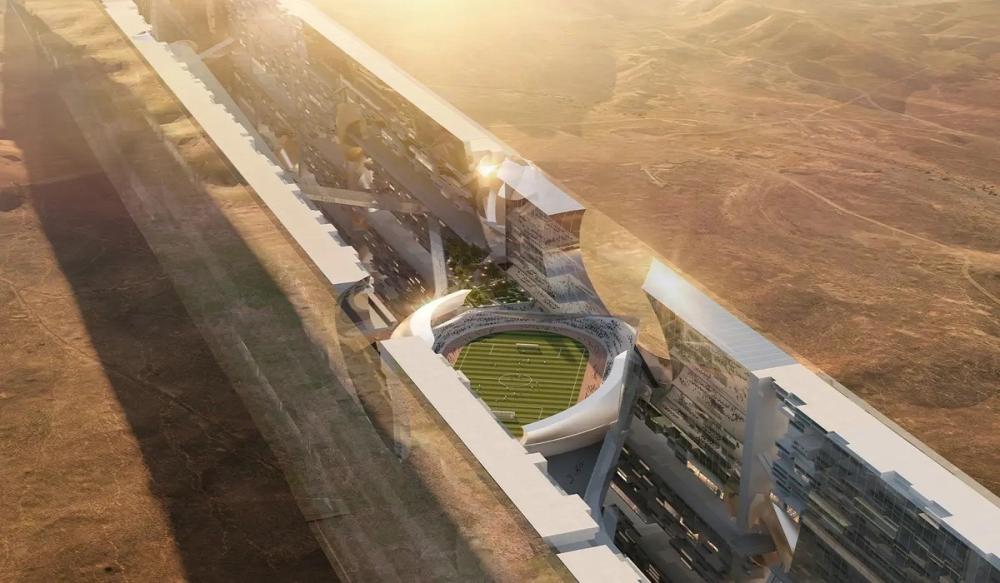The Line City is one of the ambitious projects launched by the Kingdom of Saudi Arabia within the framework of Vision 2030, which aims to diversify the Saudi economy and reduce dependence on oil. This city is located in the NEOM region, northwest of the Kingdom, and is part of the broader project that seeks to create a huge, technologically advanced and environmentally sustainable economic zone.
**The Line City Concept:**
“The Line” is a city extending 170 kilometers in length, but it is radically different from traditional cities. It is characterized by a unique design as it extends in a linear manner, allowing all facilities and services to be distributed in an easily accessible manner without the need for traditional means of transportation. The city is based on the “smart city” concept, where technology is deeply integrated into the daily lives of residents, from smart infrastructure to daily services.
**Main objectives of the city:**
1. **Environmental Sustainability:** Sustainability is considered a pivotal element in the design of “The Line”. The city is devoid of traditional cars and relies on clean and advanced means of transportation such as electric trains and self-driving vehicles. It also aims to rely completely on renewable energy to meet its energy needs.
2. **Luxury and quality of life :** “The Line” seeks to provide a high level of luxury and quality of life to its residents. Facilities and services are designed to be close to all residents, reducing the need for long commutes and promoting the concept of “integrated communities.”
3. **Technology and Innovation:** The city relies on the latest technologies to provide smart and innovative services. These technologies are expected to include smart infrastructure, advanced health and education services, and smart home technologies.
4. **Economic development:** The project is considered part of Saudi Arabia’s strategy to diversify its economy. The Line will attract global investments in the technology, renewable energy, and tourism sectors, contributing to creating new job opportunities and strengthening the local economy.
**Distinctive characteristics of the city:**
1. **Zero Carbon Design:** The city is built in a way that reduces carbon emissions and promotes environmental sustainability. The city will have no conventional cars, reducing air pollution and improving the quality of life.
2. **Integrated infrastructure:** The city’s design is based on the concept of integrated infrastructure, where all services and facilities are directed in a way that makes them easily accessible on foot or using clean public transportation.
3. **Complete reliance on renewable energy:** “The Line” will rely entirely on renewable energy sources such as solar and wind energy, which will enhance the city’s sustainability and reduce its environmental footprint.
**Potential challenges:**
Like any ambitious project, The Line faces a set of challenges that must be addressed to achieve the city’s ambitious vision. Among these challenges:
1. **Technical Implementation:** The city’s success depends heavily on the ability to implement the advanced technologies required for smart infrastructure and clean transportation.
2. **Environmental Sustainability:** Although the city is designed to be sustainable, achieving this vision requires careful management of natural resources and ensuring the sustainable provision of renewable energy.
3. **Social Integration:** It is essential that the city be designed so that it meets the needs of all residents fairly and promotes social integration.
**Conclusion:**
The Line represents a bold future vision for smart and sustainable cities. With its linear design, commitment to environmental sustainability and advanced technology, this city is a model of what cities of the future can be. Despite the potential challenges, success in achieving “The Line” vision could put Saudi Arabia at the forefront of global innovation and development, and contribute to achieving the goals of Vision 2030.

